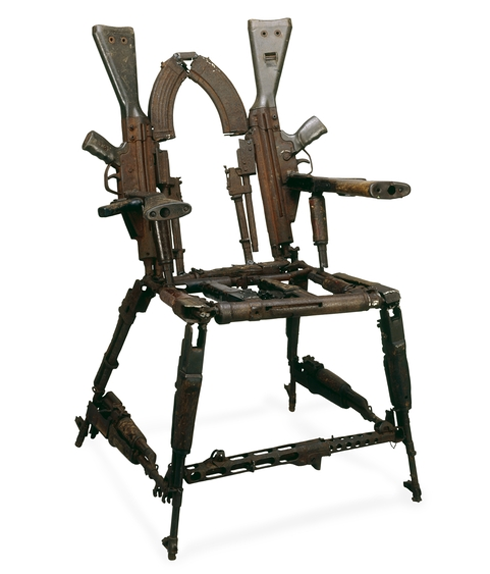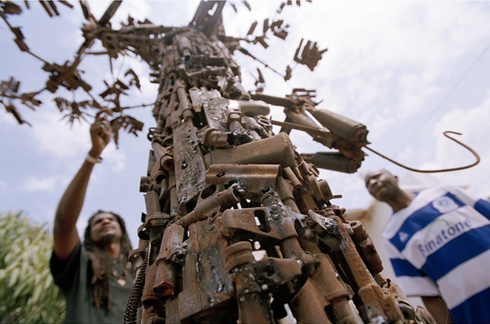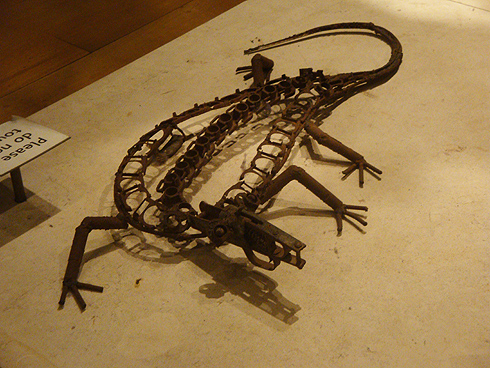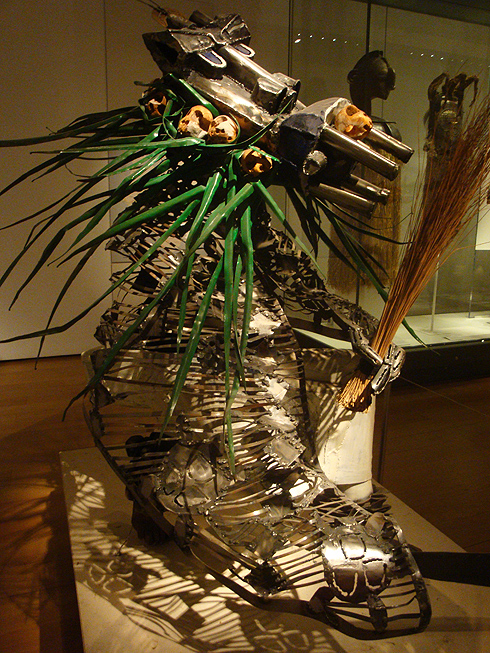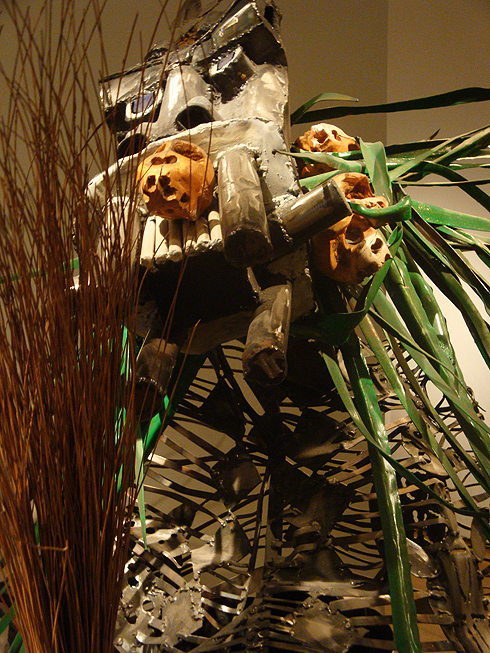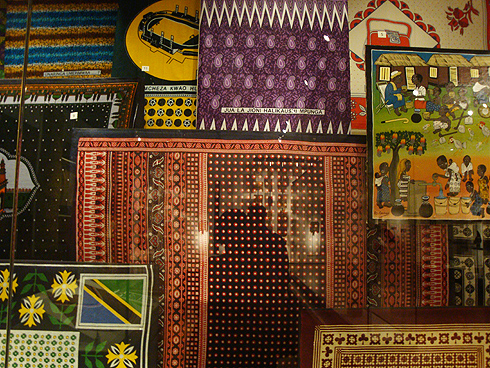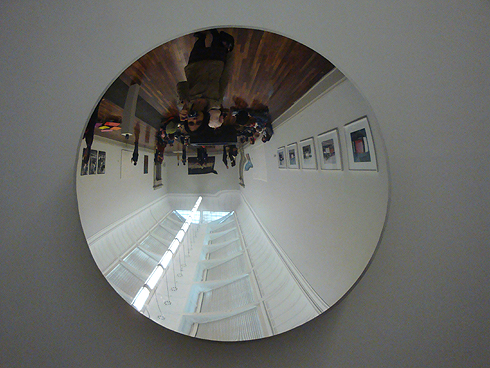Museum Visit
A trip to London ended up at the British museum. Most of the work I found inspiring were from the Africa rooms:
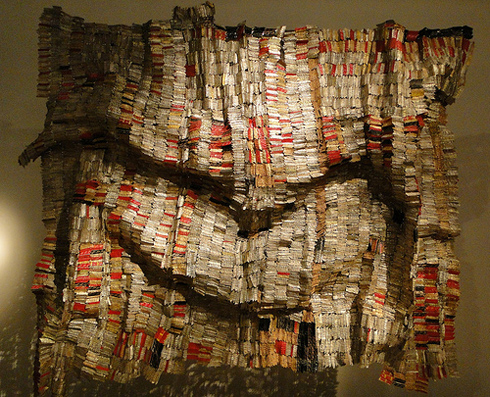
Man's Cloth. Recycled metal foil bottle-neck wrappers, copper wire. By El Anatsui, Ghana, 1998-2001. Image 1 Source. Detail photograph taken at the British Museum April 2011.
Throne of weapons, by Kester, Maputo, Mozambique, 2001. Made of decommissioned weapons from the Mozambican civil war in 1992. Exhibited at Room 25 Africa at the British Museum (April 2011).
Tree of Life Made by Kester, Hilario Nhatugueja, Fiel dos Santos and Adelino Serafim Maté. Maputo, Mozambique, 2004. Photo © 2005 Christian Aid / David Rose.
Part of the sculpture Tree of Life Made by Kester, Hilario Nhatugueja, Fiel dos Santos and Adelino Serafim Maté. Maputo, Mozambique, 2004. Photo by Aditi Kulkarni at the British Museum Room 25: Africa.
Otobo (Hippo) masquerade, made by Sokari Douglas Camp, 1995. Steel, paint, wood and palm stem brooms. British Museum April 2011. More details.
Glazed stoneware figure of a judgement group, Ming Dynasty, China, 16th century. Photo taken at British Museum, Asian Gallery.
Housepost, Iatmul people, Sepik River, Papua New guinea, 1900-1950.
Kanga display, Africa room, British Museum, April 2011.
London Exhibitions
My first trip to Tate Britain and the V&A: Looking at a wide variety of artists from Fiona Banner, Muybridge and Mondrian to Rachel Whitereed.
My visit to Tate Britain and the V&A in London was helpful in several ways. First off, Fiona Banner's work Harriet and Jaguar made a huge impact on me. The fighter jets looked beautiful and awe inspiring, especially because of the way they were placed in the museum gallery. In a way she has transformed them so that it's difficult to remember that these are deadly machines: war planes used to kill people.

Another image from Fiona Banner called Top Gun (1994), this is a close-up I've taken. It interested me because of the way it pulls you in and persuades you to read more.
Inverse Reverse Perverse (1996) by Cerith Wyn Evans at the Tate, London
Inversions (1966) by Mary Martin
Structure 14c (1961) by Stephen Gilbert, at the Tate London.
Of all the work by Eadward Muybridge that was exhibited, Panorama of San Francisco from Street Hill (1878) was the one that came closest to affecting my practice as an artist. The idea of a landscape or panorama of the city of Mumbai had been churning in my head for a while, and experiencing this work at this scale helped me focus on the concept as a method of depicting a rich space. The landscape format reveals more of the city than what is seen normally, or parts of the city like they have never been seen before; a disillusioned and yet enlightened reinterpretation of a physical urban space. I will explore the landscape format in more detail in a later post.
Update (8th Dec): Photo documentation of more exhibitions I've visisted here.


